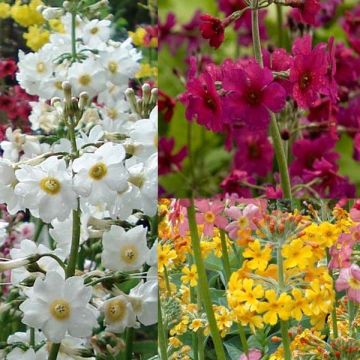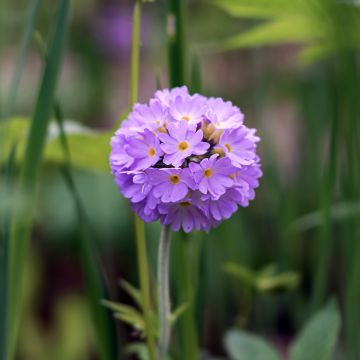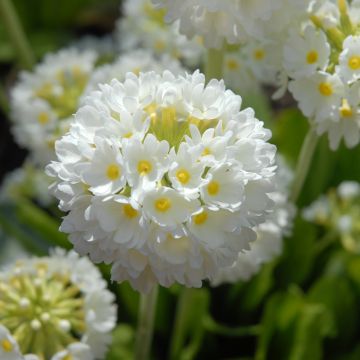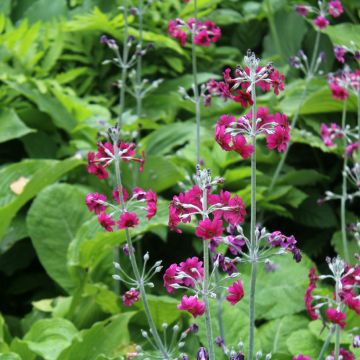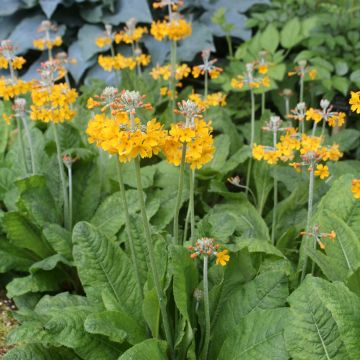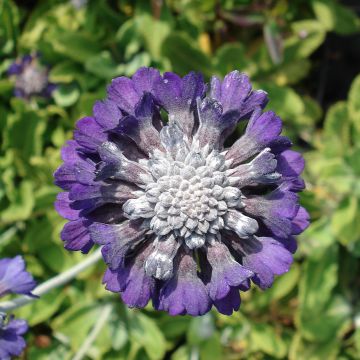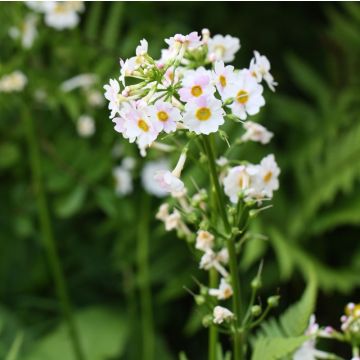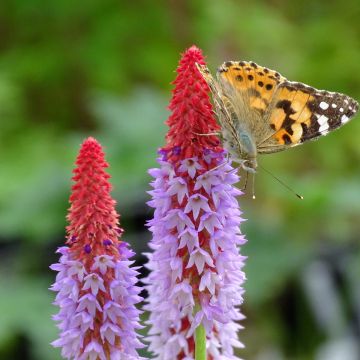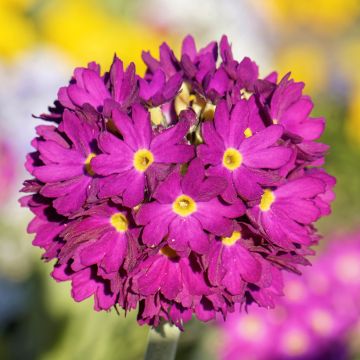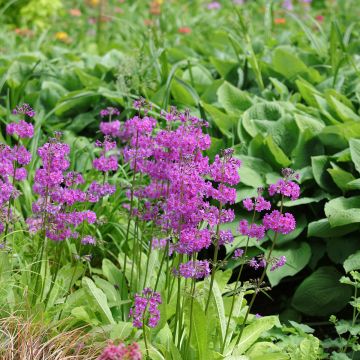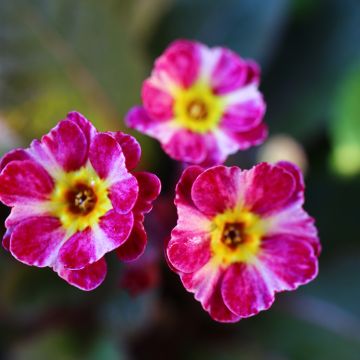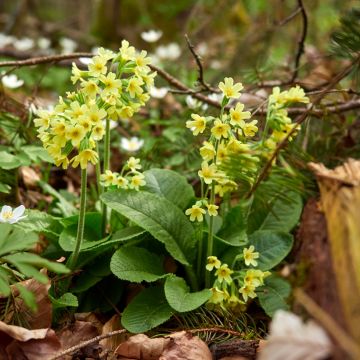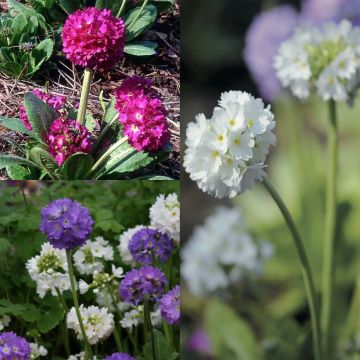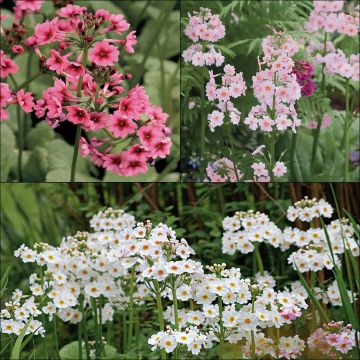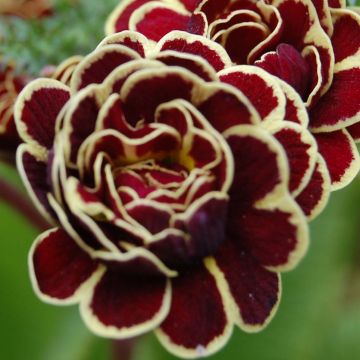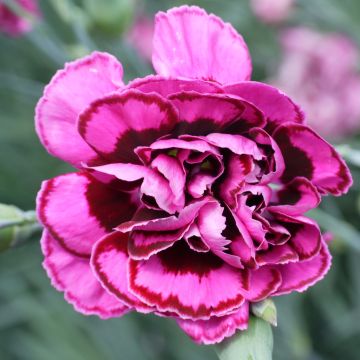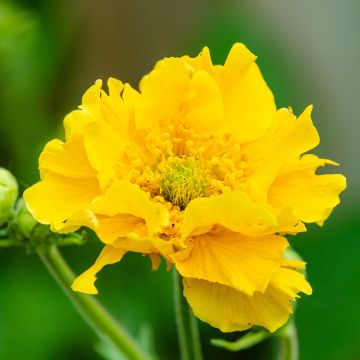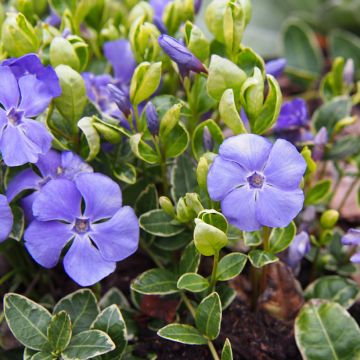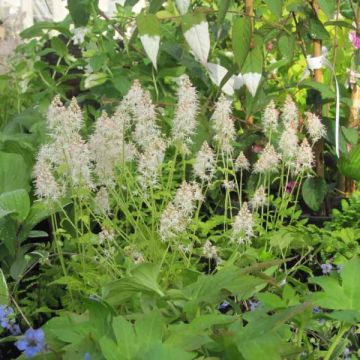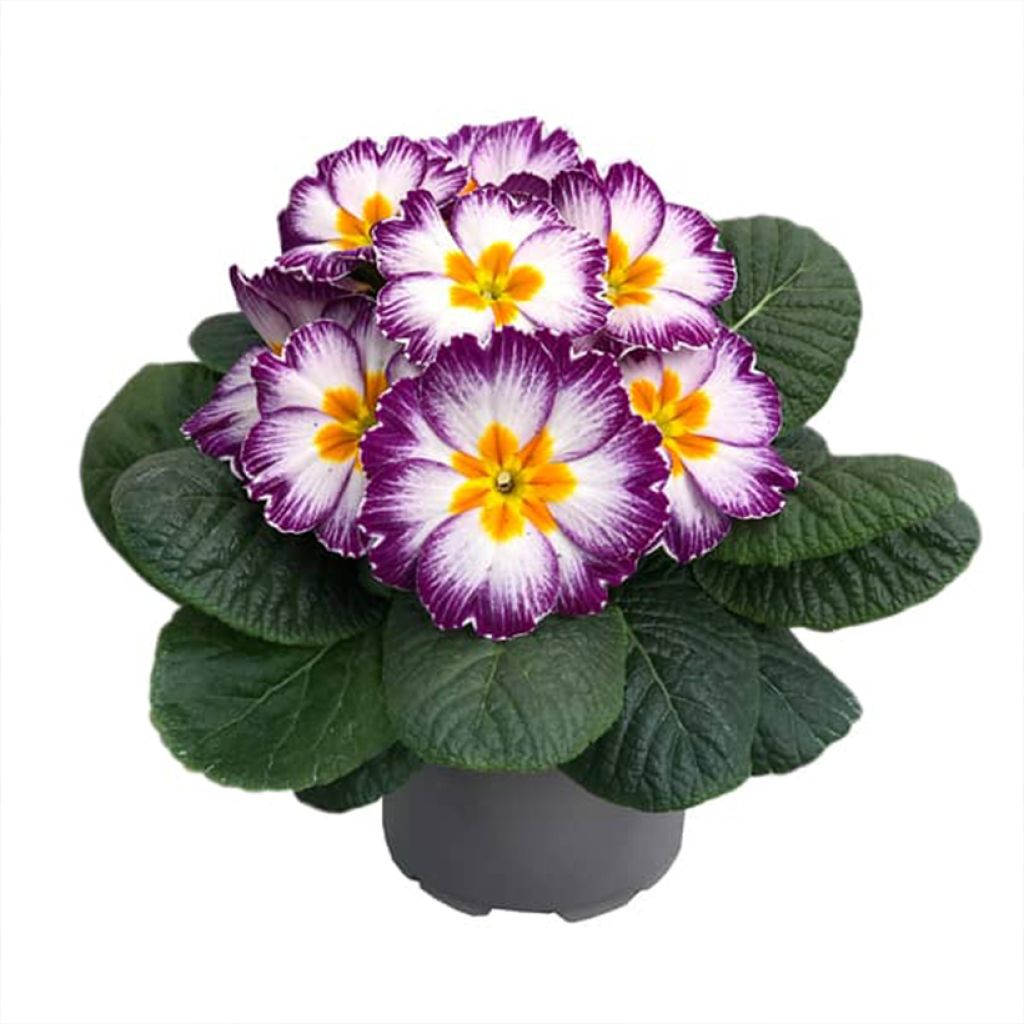

Primevère hybride Ambie Violet Flame F1 - Primula
Primula polyanthus Ambie Violet Flame F1 - Hose-in-hose
Primula x polyanthus Ambie Violet Flame F1
Hybrid Oak leaf Primula
Special offer!
Receive a €20 voucher for any order over €90 (excluding delivery costs, credit notes, and plastic-free options)!
1- Add your favorite plants to your cart.
2- Once you have reached €90, confirm your order (you can even choose the delivery date!).
3- As soon as your order is shipped, you will receive an email containing your voucher code, valid for 3 months (90 days).
Your voucher is unique and can only be used once, for any order with a minimum value of €20, excluding delivery costs.
Can be combined with other current offers, non-divisible and non-refundable.
Why not try an alternative variety in stock?
View all →This plant carries a 6 months recovery warranty
More information
We guarantee the quality of our plants for a full growing cycle, and will replace at our expense any plant that fails to recover under normal climatic and planting conditions.
Would this plant suit my garden?
Set up your Plantfit profile →
Description
The Primula 'Ambie Violet Flame F1' is a hybrid Primrose as flamboyant as its name suggests. A semi-early variety, it adorns itself from January with magnificent flowers in a sophisticated colour, combining white as the dominant shade, with a violet margin intermingled, while the center sports a very bright orange. A highly floriferous variety with short floral stems, 'Ambie Violet Flame F1' forms superb compact clumps, perfect for enlivening winter beds or creating resplendent flowering pots. In the garden, it will thrive in partial shade in moist to wet soil, for example near a water source or along an east-facing pathway.
Primroses constitute a genus of over 400 species, which has given its name to the plant family that hosts them, the Primulaceae. This family includes a few other genera of minor ornamental importance compared to Primroses, such as Androsaces, small rock plants. In the Primula genus, there are native wild plants like Primula veris, better known by its common name cowslip, easily recognizable by its yellow flowers in spring and widespread in France and Europe. Some species bring joy to collectors, such as P. vialii with orchid-like flowers in spikes, P. denticulata with globular flowers, or P. pulverulenta with "pagoda" flowers, arranged along the flower stalk. It is also a genus that greatly inspires breeders, who constantly introduce new hybrids to the market, always more floriferous and decorative. These perennial Primroses are most often used as biennials to flower beds in winter and spring.
'Primula Ambie Violet Flame F1' is a recent creation within the Ambie F1 range, marketed by two Belgian and German horticultural companies. This garden Primrose is an F1 hybrid, resulting from a cross-breeding between two "pure" varieties, which allows for greater vigour than that of the parents, known as the heterosis effect. The desired effect often applies to flowering, which becomes more abundant or larger, or to other interesting criteria such as compactness or, conversely, vigour.
'Ambie Violet Flame F1' is a very compact variety, forming a very stocky clump, wider than it is tall (about 15 cm (6in)), due to the short floral stems that do not lengthen over time. The flowers seem to emerge directly from the dark green, embossed foliage, which provides a dark setting that enhances their beauty. This small perennial from the Ambie range transforms into a true bouquet of flowers in January and February, with a round and stocky habit. With its compactness, you will need about twenty plants to cover 1 m², ensuring a truly spectacular flowering display. The numerous white corollas with a background colour are adorned with an irregular violet margin, sometimes toothed, creating the illusion of fringed petals. The white colour infiltrates this margin, creating a network of small veins that contrast nicely with the violet. Adding to the refinement, each petal is adorned with a bright orange macule at its base, crossed by a central reddish vein, while the centre where all the petals converge takes on a greenish hue that further enhances this festival of cheerful colours. This bright adornment brings joy to beds in the heart of winter, as flowering begins in January and continues into February, and beyond.
Being quite hardy, at least down to -20°C (-4°F), this Primrose appreciates fresh but well-draining soils, as it does not tolerate excessive moisture or dryness. Relatively demanding, it requires a neutral to slightly acidic soil, rich in humus. It also tolerates heavy and clay soils, as long as they are not too wet in winter. It will be comfortable in a semi-shaded position, at least not exposed to direct sunlight. As an F1 hybrid, it will not self-sow like pure varieties would. You can also grow it in a pot, alone or combined with other plants to decorate your balcony, not hesitating to mix dwarf conifers, perennials, or grasses with biennials.
This hybrid Primrose, the result of breeders' work and imagination, will delight enthusiasts of colourful and joyful adornments. Original and highly decorative, it will be a strong element in your winter beds. With its compactness, you can plant it in the foreground of Pachysandras, which, like it, appreciate semi-shaded situations and neutral to acidic soils. This Primrose can also coexist in neutral soils with the excellent Hellebores, whose flowering extends from autumn to spring, in various colours depending on the varieties. Or with the Cyclamen coum, a charming small perennial with flowers similar to those of its indoor cousin, but despite this delicate appearance, it is just as hardy as our little Primrose.
Report an error about the product description
Flowering
Foliage
Plant habit
Botanical data
Primula
x polyanthus
Ambie Violet Flame F1
Primulaceae
Hybrid Oak leaf Primula
Cultivar or hybrid
Other Primula - Primroses
View all →Planting and care
Primroses can be planted in pots and containers or directly in the ground in finely prepared and enriched soil. Plant them as soon as possible upon receipt, in September-October or in March-April. If the intended location is not yet ready or the conditions are unfavourable for planting, you can grow them on as plug plants for 4 to 6 weeks.
In pots and containers, use a good potting soil for flowering plants (geranium-type potting soil) enriched with clay and slow-release fertiliser, light and well-draining. The top of the plug should be level with the soil. Water generously at planting and during the following weeks, as plug plants can dry out quickly. However, be careful of excess water! Make sure to use containers with drainage holes and empty the saucer 10 minutes after watering. Remember to water even during winter if it doesn't rain or if the container is placed in a sheltered location. Do not water during freezing periods.
Very floriferous and fast-growing, primroses are hungry plants. As soon as growth resumes, in late February or early March, and throughout the flowering period, apply a liquid fertiliser for flowering plants containing iron and trace elements 1 to 2 times a week in the watering can. Remove faded flowers to promote new blooms. Once the flowering is over, potted plants can be replanted in the garden in semi-shade.
Planting period
Intended location
Care
This item has not been reviewed yet - be the first to leave a review about it.
Similar products
Haven't found what you were looking for?
Hardiness is the lowest winter temperature a plant can endure without suffering serious damage or even dying. However, hardiness is affected by location (a sheltered area, such as a patio), protection (winter cover) and soil type (hardiness is improved by well-drained soil).

Photo Sharing Terms & Conditions
In order to encourage gardeners to interact and share their experiences, Promesse de fleurs offers various media enabling content to be uploaded onto its Site - in particular via the ‘Photo sharing’ module.
The User agrees to refrain from:
- Posting any content that is illegal, prejudicial, insulting, racist, inciteful to hatred, revisionist, contrary to public decency, that infringes on privacy or on the privacy rights of third parties, in particular the publicity rights of persons and goods, intellectual property rights, or the right to privacy.
- Submitting content on behalf of a third party;
- Impersonate the identity of a third party and/or publish any personal information about a third party;
In general, the User undertakes to refrain from any unethical behaviour.
All Content (in particular text, comments, files, images, photos, videos, creative works, etc.), which may be subject to property or intellectual property rights, image or other private rights, shall remain the property of the User, subject to the limited rights granted by the terms of the licence granted by Promesse de fleurs as stated below. Users are at liberty to publish or not to publish such Content on the Site, notably via the ‘Photo Sharing’ facility, and accept that this Content shall be made public and freely accessible, notably on the Internet.
Users further acknowledge, undertake to have ,and guarantee that they hold all necessary rights and permissions to publish such material on the Site, in particular with regard to the legislation in force pertaining to any privacy, property, intellectual property, image, or contractual rights, or rights of any other nature. By publishing such Content on the Site, Users acknowledge accepting full liability as publishers of the Content within the meaning of the law, and grant Promesse de fleurs, free of charge, an inclusive, worldwide licence for the said Content for the entire duration of its publication, including all reproduction, representation, up/downloading, displaying, performing, transmission, and storage rights.
Users also grant permission for their name to be linked to the Content and accept that this link may not always be made available.
By engaging in posting material, Users consent to their Content becoming automatically accessible on the Internet, in particular on other sites and/or blogs and/or web pages of the Promesse de fleurs site, including in particular social pages and the Promesse de fleurs catalogue.
Users may secure the removal of entrusted content free of charge by issuing a simple request via our contact form.
The flowering period indicated on our website applies to countries and regions located in USDA zone 8 (France, the United Kingdom, Ireland, the Netherlands, etc.)
It will vary according to where you live:
- In zones 9 to 10 (Italy, Spain, Greece, etc.), flowering will occur about 2 to 4 weeks earlier.
- In zones 6 to 7 (Germany, Poland, Slovenia, and lower mountainous regions), flowering will be delayed by 2 to 3 weeks.
- In zone 5 (Central Europe, Scandinavia), blooming will be delayed by 3 to 5 weeks.
In temperate climates, pruning of spring-flowering shrubs (forsythia, spireas, etc.) should be done just after flowering.
Pruning of summer-flowering shrubs (Indian Lilac, Perovskia, etc.) can be done in winter or spring.
In cold regions as well as with frost-sensitive plants, avoid pruning too early when severe frosts may still occur.
The planting period indicated on our website applies to countries and regions located in USDA zone 8 (France, United Kingdom, Ireland, Netherlands).
It will vary according to where you live:
- In Mediterranean zones (Marseille, Madrid, Milan, etc.), autumn and winter are the best planting periods.
- In continental zones (Strasbourg, Munich, Vienna, etc.), delay planting by 2 to 3 weeks in spring and bring it forward by 2 to 4 weeks in autumn.
- In mountainous regions (the Alps, Pyrenees, Carpathians, etc.), it is best to plant in late spring (May-June) or late summer (August-September).
The harvesting period indicated on our website applies to countries and regions in USDA zone 8 (France, England, Ireland, the Netherlands).
In colder areas (Scandinavia, Poland, Austria...) fruit and vegetable harvests are likely to be delayed by 3-4 weeks.
In warmer areas (Italy, Spain, Greece, etc.), harvesting will probably take place earlier, depending on weather conditions.
The sowing periods indicated on our website apply to countries and regions within USDA Zone 8 (France, UK, Ireland, Netherlands).
In colder areas (Scandinavia, Poland, Austria...), delay any outdoor sowing by 3-4 weeks, or sow under glass.
In warmer climes (Italy, Spain, Greece, etc.), bring outdoor sowing forward by a few weeks.






























